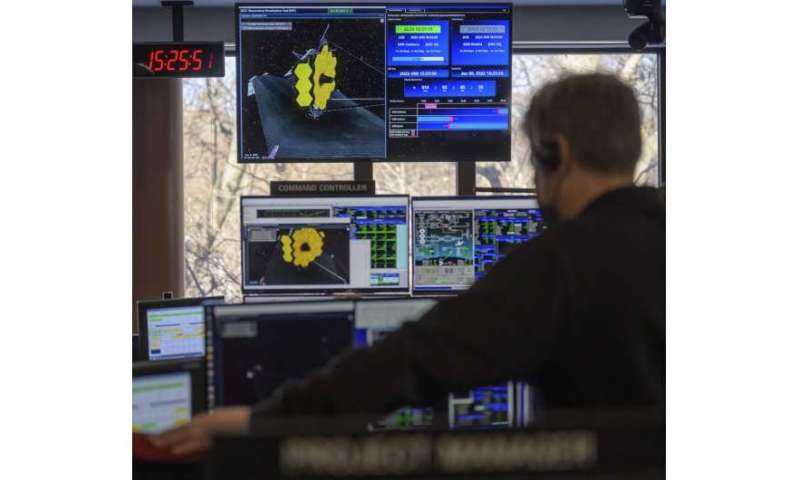Best of Last Week – James Webb telescope opens mirror, self-driving race cars, finger-clip blood pressure monitor

It was a good week for space science as NASA's James Webb Space Telescope opened its gold-plated mirror—an achievement that marked the completion of the unfolding of the powerful telescope's pieces, paving the way for some exciting new space observations. Also, Henrik Svensmark with the Technical University of Denmark's National Space Institute found that supernovae and life on Earth appear closely connected. He found an association between the fraction of organic matter buried in sediments and changes in the occurrence of supernovae. And a team with several members from the University of California and one each from Ruhr-Universität Bochum, Universitätsstrasse and the University of Florida found that tardigrades might be the ideal candidates for testing the limits of sending living creatures through space at near the speed of light.
In technology news, teams of engineering students from around the world built self-driving Formula I race cars and showed off their designs as races were held at this year's CES. Also, Samsung debuted its updated Eco-Remote at CES; this time, they gave the eco-friendly TV remote the ability to harness energy from local Wi-Fi radio waves. And a team at the University of Minnesota Twin Cities developed the first fully 3D-printed, flexible OLED display. And Dutch startup Ocean Grazer announced what they call an "Ocean battery" in which wind turbines push seawater into underwater baffles that build pressure during windy periods. The pressure can be slowly released during calm periods to drive turbines that produce electricity.
In other news, a team at the Salk Institute announced a new route for regulating blood sugar levels independent of insulin—a second molecule, produced in fat tissue, that also potently and rapidly regulates blood glucose. And a team working at China's tokamak facility achieved 120 million degrees Celsius for 1,056 seconds, which is a major step toward developing fusion as a power source.
And finally, if you have hypertension and dislike the uncomfortable squeezing experience associated with blood pressure measuring devices, you may want to check out the work done by a team at the University of Missouri. They created a device that clips on a finger that can read blood pressure and other vital signs such as heart rate and blood oxygen saturation.
© 2022 Science X Network